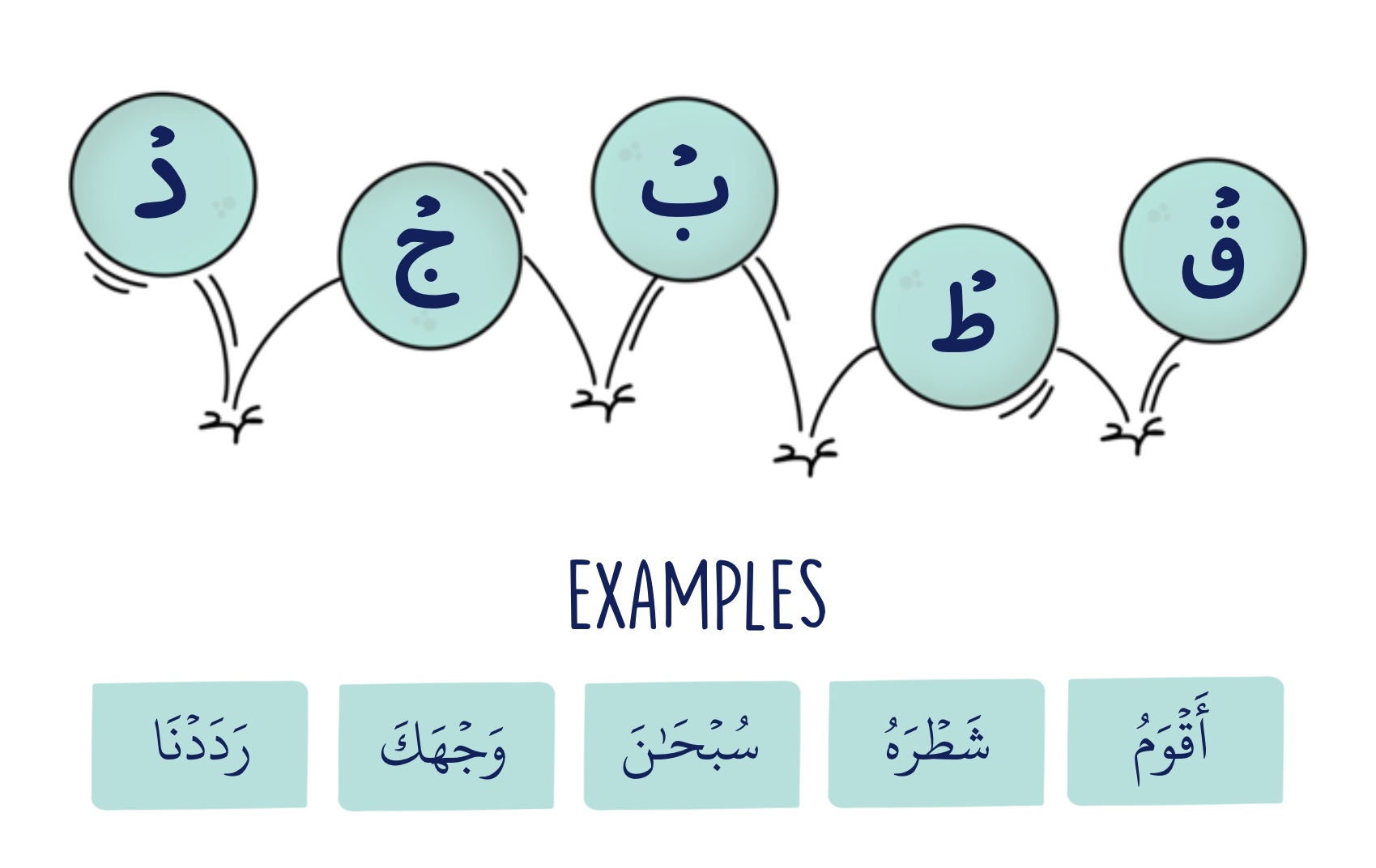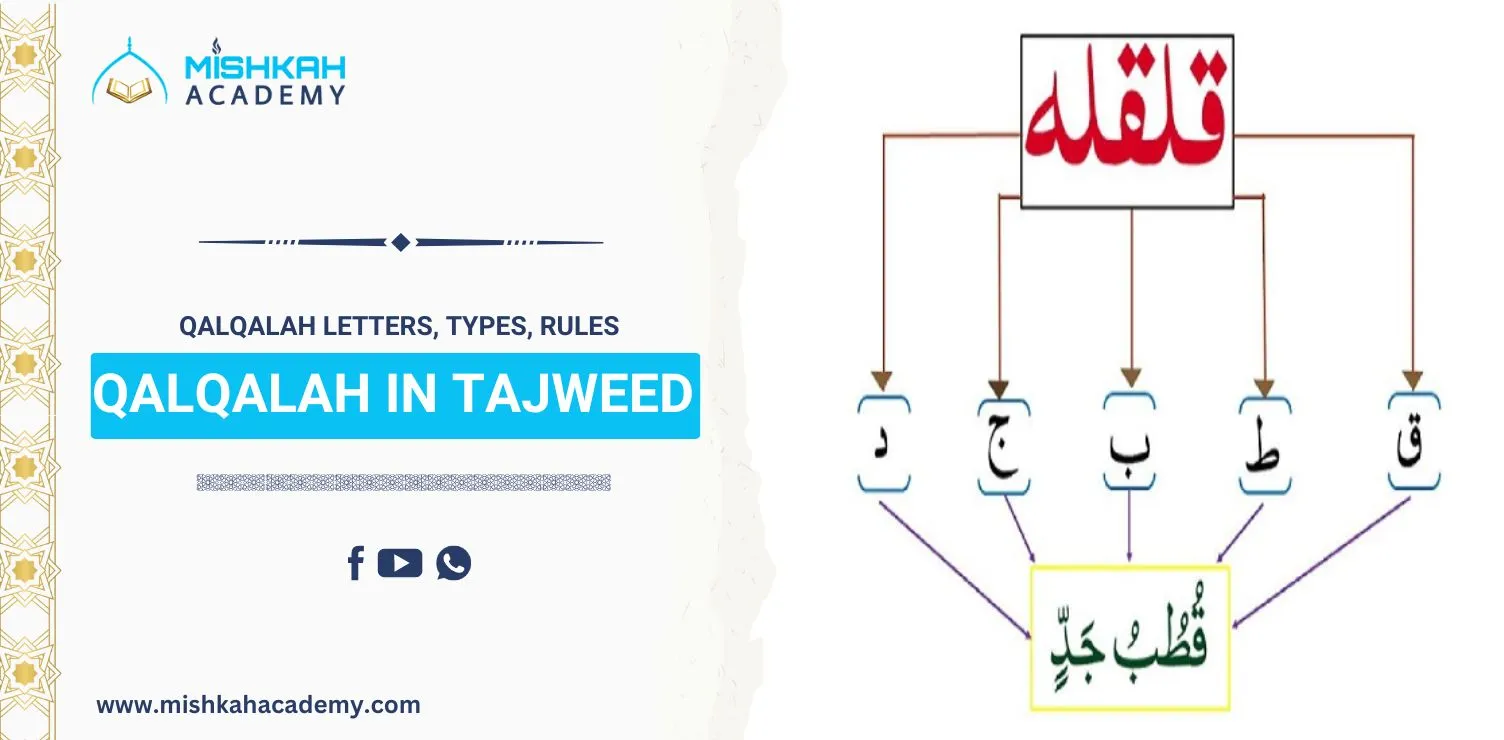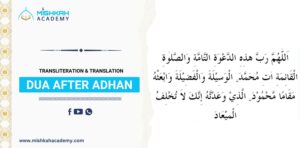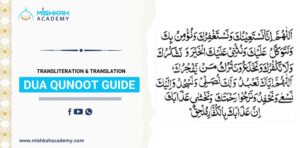Qalqalah is the sound made when certain vowels are said particularly when they are in a state of sukoon ( ْ ) which indicates that they do not have a vowel sound. A qalqalah letter is read with a faint echo or bouncing sound when it appears with sukoon. This is done to make the letter stand out and be loud so that it won’t be absorbed or combined with other letters. The pronunciation is crisp and clear because to its echo-like sound. It helps individuals to recite quran beautifully.
In Tajweed, what is Qalqalah?
Table of Contents
ToggleOne of the key ideas in the science of Tajweed, which deals with pronunciation guidelines when reciting the Qur’an, is qalqalah. Reciters are better able to preserve the elegance and integrity of the Qur’anic recital when they comprehend qalqalah. The Arabic word “قَلْقَلَة” (qalqala), which meaning to “echo” or “vibrate,” is the source of the name “qalqalah.” It describes a unique sound made when some characters are uttered in an echo- or bounce-like manner. These letters are spoken clearly thanks to a unique articulation, even when they appear in the middle or end of a word.
In order to ensure that the Qur’an is read as it was revealed to Prophet Muhammad (peace be upon him), the norms of Tajweed are intended to maintain the distinctive pronunciation and grammatical characteristics of the text. One of these fundamental guidelines that helps prevent meaning distortion and preserve the lyrical quality of recitation is Qalqalah.
Qalqalah Letters In Arabic
Qalqalah means vibration in Arabic. Whilst Qalqalah in Tajweed means disturbing the 5 Qalqalah letters having Sukoon. This means a Saakin but with no corresponding movement with vowel letters with Fatha, Dummah, or Kasra. Qalqalah idiomatically: to disturb the Saakin letter, but without any corresponding movement of the mouth to become turbulent with a vibration and a distinct tone.
Qalqalah letters grouped in the phrase: قُطب جَد (Qutb Jad). That is, Haroof Qalqalah which are:
ق ط ب ج د
Dall Jeem Baa Taa Qaaf


These are referred to as the qalqalah letters, and a correct and beautiful recitation depends on how these letters are spoken. It is significant to remember that qalqalah only appears when these letters are not carrying a vowel sound, or when they are in the state of sukoon.
Note: Mishkah Academy offers expert teachers fluent in both Arabic and English, making it easy to learn Qalqalah letters in English. You can also access detailed Qalqalah worksheets in our advance tajweed course or online quran recitation course.
Rules of Qalqalah
Like anything else, there are some rules of Qalqalah that must be applied in Tajweed. There are two conditions for making the letter Qalqalah sound:
- The first rule of Qalqalah is that the letter is one of the five letters of Qalqalah:
ق ط ب ج د
- The Qalqalah letter, occurring either in the middle or at the end of the word, is Sakin. This indicates that it has a sukoon sign on it. If the Qalqalah letter has Fatha, Kasra, Dummah, or Tanween on it, it does not create an echoing or shaking sound and we normally pronounce them.
Types of Tajweed Qalqalah
Based on the strength and purity of the echo created, Tajweed defines three different forms of qalqalah.
These are the following:
Qalqalah Sughra:
Also known as Minor Qalqalah, is a kind of qalqalah that happens when a sukoon-stated Qalqalah letter appears in the middle of a word. When compared to other kinds, the bouncing sound is fainter and more quiet. It’s critical to strike a balance such that the echo is noticeable but not overused.
For instance:
In the midst of the word “يَقْتُلُ” (yaqtulu) is the letter qaf. The qaf is pronounced with qalqalah because it has a sukoon.
Qalqalah Kubra (Major Qalqalah)
This kind appears when a pause (waqf) causes a qalqalah letter at the end of a word to become sukoon. There is a greater and more audible echo or bouncing sound. This is particularly true if you pause during recitation at the end of a verse.
For instance:
When one stops at the letter qaf at the end of the word “الْخَلْقَ” (al-khalaq), the qalqalah sound becomes stronger, resulting in qalqalah kubra.
Qalqalah Akbar (Strongest Qalqalah)
When the qalqalah letter is at the end of a word and is stressed or highlighted (mushaddad), it is known as Qalqalah Akbar (Strongest Qalqalah)
The loudest and most noticeable sound is made in qalqalah akbar. It highlights the letter’s clarity and aids in maintaining the verse’s meaning, since poor pronunciation could completely alter it.
For instance:
“وَتَبَّ” (wa tabb) concludes with the letter ba in a doubled-over state known as tashdeed. Strong qalqalah sounds provide a distinct, powerful echo.
Levels of Qalqalah
- Level 1: Strong
- Level 2: Intermediate
- Level 3: Weak
Examples Of Qalqalah
1. Strong Qalqalah (Kubra)
This type has severity and comes at the end of the verse. Qalqalah becomes strong when the word is at the end, it has a intensity, the last vowel drops, so you say it with Qalqalah.
You may notice that the last letters that require Qalqalah are not with Sukoon! However, pausing at the end of each verse is preferable, and so in such circumstances you should do a strong Qalqalah.
Qalqalah Kubra Examples:
We mention here examples of Qalqalah in the Qur’an for the strong type. Another example b in the next verse. Here, Qalqalah will hold for a while because it has intensity and stillness.
The last vowel is dropped and the stress is left because it is part of the word. So, if it is Wa Tabba, you make it Wa Tabb.
 Kasab Al-falaq
Kasab Al-falaq
![]() Muheett Masad Al-ma’aarij
Muheett Masad Al-ma’aarij
2. Medium Qalqalah (Wusta)
Qalqalah is intermediate or medium when the letter that appears at the end of the word does not have a Shadda. It does not matter if the letter contains an original Sukoon or not. These words are read in clear voice of Qalqalah.
Qalqalah Wusta Examples:
Examples of Qalqalah letters of the medium type in the Qur’an. The following Words contain medium or intermediate Qalqalah. Here the Sukoon is clearly marked on the letters of Qalqalah.

qad aflaha najid lahu
3. Weak Qalqalah (Sughra)
Qalqalah is weak if it is in the middle of the recitation. Qalqalah letters often appear in the middle of a word or have Sukoon at the top. But, when the reader decides to continue, a weak Qalqalah occurs as the reader quickly moves on to the next letter.
Qalqalah Sughra Examples
We mention below the letters of Qalqalah in the Qur’an of the weak type. Huruf Qalqalah Sughra can be seen in the following verses.
![]()
khalaqna tatt-heeran abnaa’akum
Examples of Qalqalah in the Qur’an
There are many examples of applying qalqalah in the Qur’an, and reciters can improve their reciting skills by learning to recognize these examples. Here are some instances of qalqalah letters found in the Qur’an:
In Surah Al-Ikhlas (112:1), قُلْ هُوَ اللَّهُ أَحَدٌ it says, “Say, He is Allah, the One.” The letter qaf in “قُلْ” is recited in this verse with qalqalah sughra.
The verse “تَبَّتْ يَدَا أَبِي لَهَبٍ وَتَبَّ” appears in Surah Al-Masad (111:1). (May Abu Lahab suffer and his hands perish!). “وَتَبَّ“ uses qalqalah akbar when reciting the letter ba, since it is highlighted at the end of the verse.
Conclusion
Understanding Qalqalah, a fundamental Tajweed rule, helps correct and short Qur’anic recitation. Renderers may maintain the beauty and meaning of the sacred text by focusing on the correct pronunciation of the qalqalah letters (qaf, ta, ba, jim, and dal). As we all know the importance of tajweed so developing this approach is an important step toward becoming proficient in Tajweed and improving the whole Qur’anic recitation experience, regardless of whether one is performing in qalqalah sughra, kubra, or akbar.






